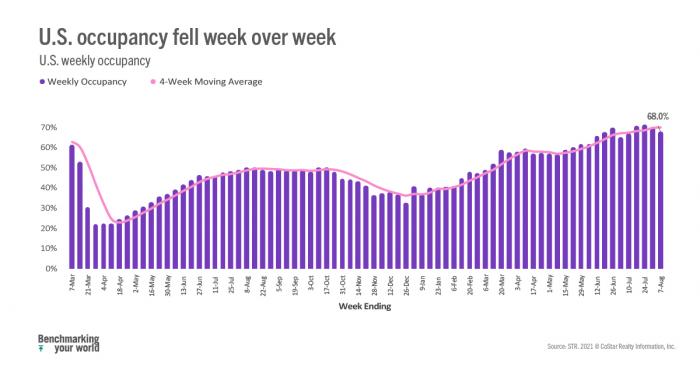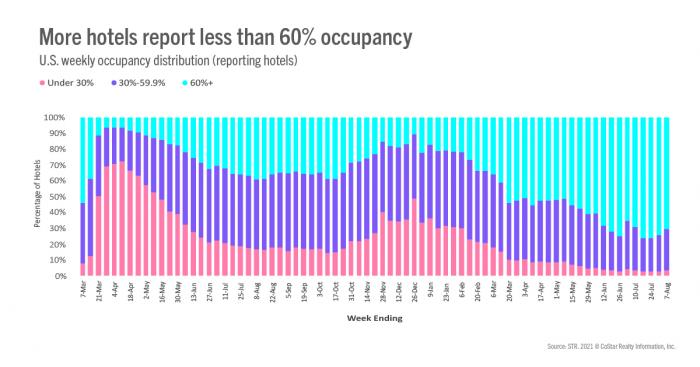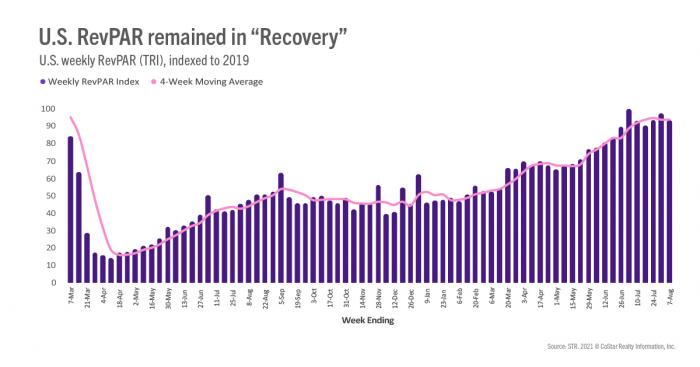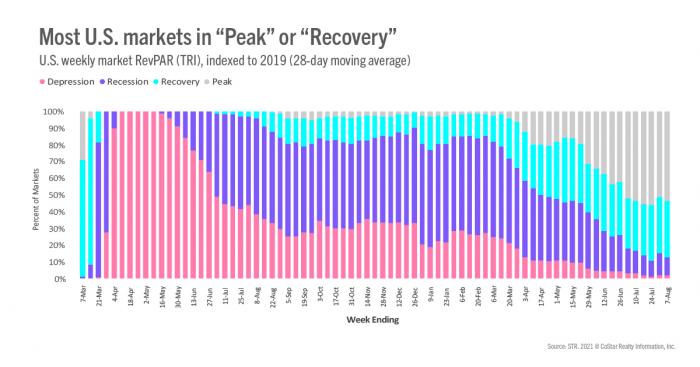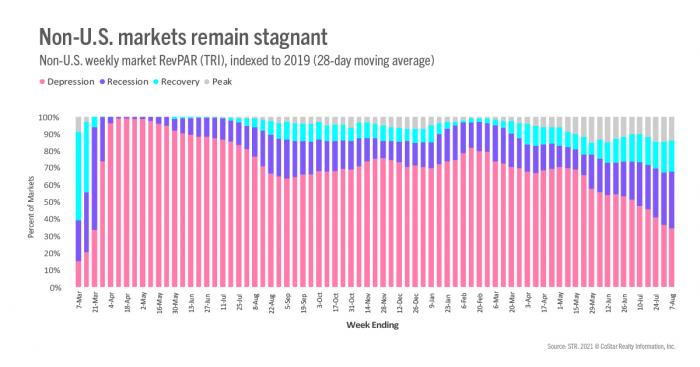Previous MRM versions: 24 July | 31 July
Week ending 7 August
Amid increased COVID cases, the rise of the Delta variant, and the return of in-person schooling, U.S. weekly hotel room demand dropped for a second consecutive week. The decrease in demand caused occupancy to fall to 68.0% for the week (1-7 August), the country’s lowest level of the past four weeks. The largest declines were seen in the south, where COVID-19 cases are surging and a high percentage of students have returned to the classroom. Louisiana and Florida saw the greatest occupancy declines, both falling more than 6 percentage points week over week. Mississippi and Wisconsin followed, with week-on-week occupancy decreases of 5 points each. In all, 32 states saw occupancy fall by a point or more this past week. Along with a slowdown in demand, occupancy was also impacted by an increase in supply, as 48,000 rooms reopened in the past week, with the largest number of reopenings in Orlando, New York City, and Boston. There are 68,000 rooms (1.2% of total supply) still closed in the U.S. due to the pandemic. On a total-room-inventory basis (TRI), which accounts for temporarily closed hotels, weekly occupancy was 65.5%.
